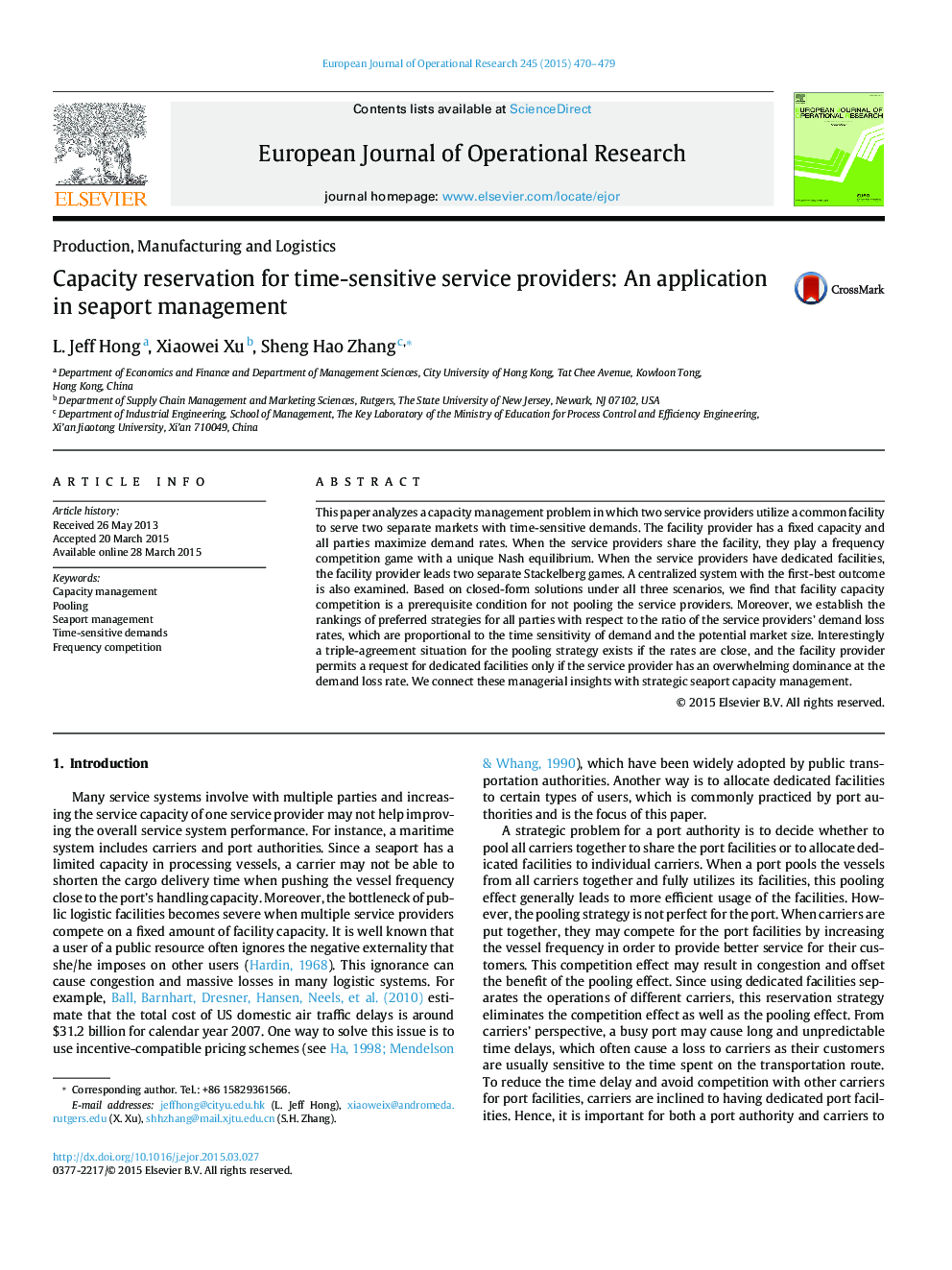| Article ID | Journal | Published Year | Pages | File Type |
|---|---|---|---|---|
| 479522 | European Journal of Operational Research | 2015 | 10 Pages |
•We model a facility provider that offers its facility to two service providers.•We examine the tradeoffs between capacity pooling and reservation strategies.•All parties optimal strategy choice depends on the ratio of demand loss rates.•The facility provider prefers the pooling strategy when the above ratio is high.•The service provider with a small demand loss rate prefers the pooling strategy.
This paper analyzes a capacity management problem in which two service providers utilize a common facility to serve two separate markets with time-sensitive demands. The facility provider has a fixed capacity and all parties maximize demand rates. When the service providers share the facility, they play a frequency competition game with a unique Nash equilibrium. When the service providers have dedicated facilities, the facility provider leads two separate Stackelberg games. A centralized system with the first-best outcome is also examined. Based on closed-form solutions under all three scenarios, we find that facility capacity competition is a prerequisite condition for not pooling the service providers. Moreover, we establish the rankings of preferred strategies for all parties with respect to the ratio of the service providers’ demand loss rates, which are proportional to the time sensitivity of demand and the potential market size. Interestingly a triple-agreement situation for the pooling strategy exists if the rates are close, and the facility provider permits a request for dedicated facilities only if the service provider has an overwhelming dominance at the demand loss rate. We connect these managerial insights with strategic seaport capacity management.
